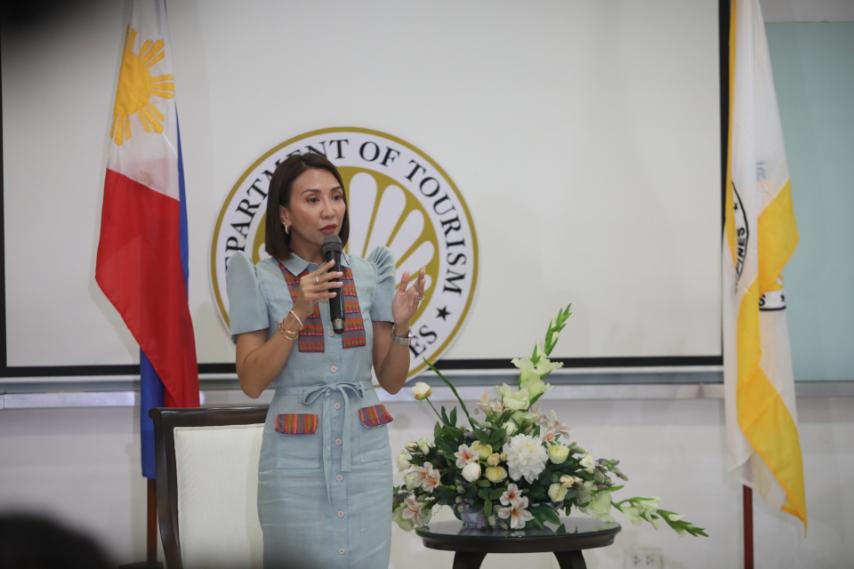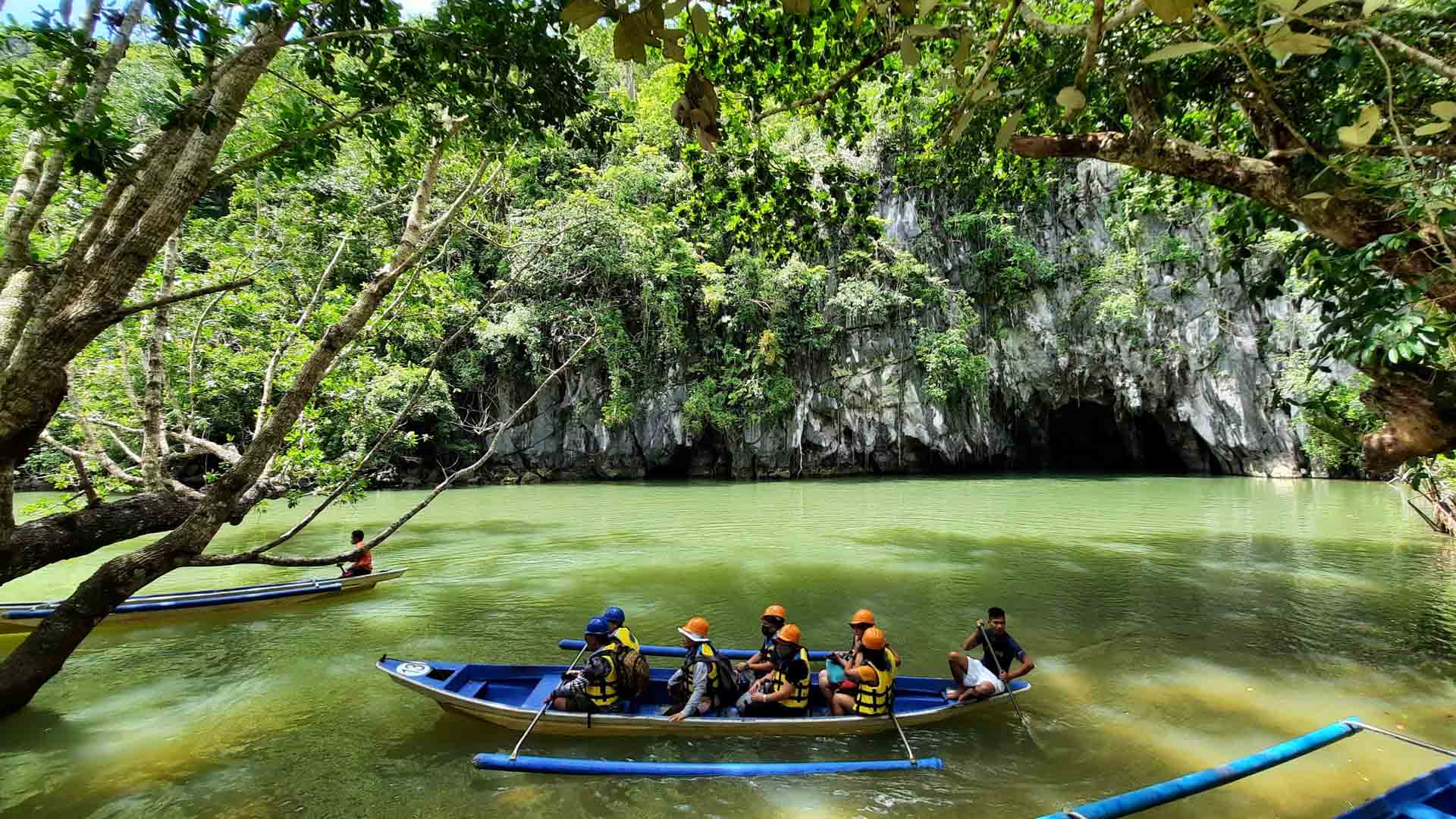After two years of sparse crowds in popular attractions, the Philippines is slowly seeing the return of visitors and hoping for the tourism sector’s rebound soon.
Revitalizing the sector — one of the hardest hit at the onset of the health crisis in 2020 — is one of the Marcos administration’s top priorities, seeking to transform it into a “major pillar” of economic growth in the next six years.
Days before his first State of the Nation Address (SONA), President Ferdinand Marcos Jr. instructed his Tourism chief, Christina Frasco, to introduce proactive policies and further improve tourism infrastructure to speed up the sector’s recovery.
At their July 12 Cabinet meeting, Marcos said he wanted local tourism-related infrastructure to be “at par” with top tourist destinations such as Singapore, recognizing the fact that tourism is a vital cog in the country’s economy, supporting jobs in hotels, restaurants, resorts, among others.
Prior to the pandemic, tourism’s contribution to the 2019 gross domestic product (GDP) was PHP2.48 trillion, or at least 12.8 percent of the total economy.
With flights and tourism activities brought to a screeching halt in 2020, tourism’s share to GDP went down to 5.2 percent in 2021.
While faced with the daunting task of bringing tourism figures back to pre-pandemic levels, the new administration is bullish on the sector’s recovery.
Frasco herself committed to the “full development of the enabling environment — the policies, conditions, and infrastructure — that will further boost the revitalization of the tourism industry.”

The Department of Tourism (DOT) vowed to exert efforts to improve the country’s ranking, from being the sixth in Southeast Asia in terms of tourist arrivals and preference vis-a-vis leaders such as Thailand, Malaysia and Singapore.
In order to achieve these, the DOT laid down the following objectives:
- Improve tourism infrastructure and accessibility;
- Enable cohesive and comprehensive digitalization and connectivity;
- Enhance overall tourist experience;
- Equalize tourism product development and promotion;
- Diversify portfolio through multi-dimensional tourism; maximization of domestic tourism; and
- Strengthen tourism governance through close coordination with local government units and stakeholders
The department will anchor these goals on “three focus points,” namely connectivity, convenience, and equality.
Enhancing connectivity
Frasco has stressed that while there are available international airports at certain gateways across the Philippines, “the reality is that many of these airports are simply not yet of the global standard that would put us at par with our direct competitors in the Asean member nations.”
One of her proposals is to revisit the capacity of these airports to determine whether there would be an addition of direct flights to tourist destinations.
In a statement ahead of the SONA, the DOT said it would promote convergence with agencies such as the Department of Public Works and Highways and the Department of Transportation.
“[A]ttention will be given to improving end-to-end transportation by land, sea, and air from arrival to departure, reducing as much as possible the number of legs a tourist has to take to arrive at his destination, and reviewing the availability and affordability of these routes,” it said.
The DOT also vowed to introduce more regional tourism circuits to connect bigger provinces and more well-known destinations to smaller islands.
After Frasco’s listening tours last week, DOT Northern Mindanao Director Marie Elaine Unchuan shared that her office submitted a report listing the infrastructure development the region needed, including the possibility of upgrading the Laguindingan Airport to accommodate international flights.
“(The development of the airport) is actually under the Department of Transportation’s purview but of course, for us, we would like to encourage that because we also monitor the progress of the airport,” Unchuan told the Philippine News Agency (PNA) in an interview.
“It’s in our best interest in tourism na mas maayos ‘yung airport facility and siyempre maka-accommodate ng (that we have better airports to accommodate more) international flights.”
Philippine Tour Operators Association (PHILTOA) president Fe Abling-Uy agreed that upgrading airports, such as the Laguindingan, would be a welcome development.
“If it can be rehabilitated or improved to receive international flights, that will be a very good plan because that would bring development not only to the place where the airport is located but also to nearby areas and communities,” she told the PNA.
Convenience, quality
On making travel more convenient for tourists, the DOT will seek more uniform travel protocols through inter-agency collaboration with the Bureau of Immigration, the Department of Health, the Department of the Interior and Local Government, as well as local government units.
In addition, the agency will also establish tourist service centers and rest areas across regions.
It will also diversify the country’s portfolio by harnessing its potential in nature-based tourism; Meetings, Incentives, Conferences, and Exhibitions (MICE); heritage and culture; food; health wellness and retirement; and the arts.
“There is no question as to the richness of our heritage and the vastness of our culture, but, there is definitely still a need for national government assistance to local government assistance as far as technical expertise on how we can harness these aspects of our country so we can package it in a manner that is at par with the finest that is being offered by other countries, and make our offerings in our country characteristically Filipino,” Frasco said.
Echoing Marcos’ pronouncement, Frasco added that the Philippines would bank on domestic tourism while attracting inbound tourists “to yield better economic returns.”
“From our experience in Cebu, it was really domestic tourism that helped Cebu in its recovery from the ravages of the pandemic and typhoon Odette,” she said.
“The President’s recognition of the need to maximize domestic tourism simultaneously with international tourism would surely raise our regional and global standing because his vision is very clear on the elevation of all the elements constituting the Philippine tourism industry as a whole,” she added.
Her department would also facilitate “cross-province collaboration” and conduct an extensive site and product mapping, particularly on areas not yet given equal opportunity for attention and development.
Tourism stakeholders, such as the PHILTOA, meanwhile, look forward to the kind of attention the new administration will give to the industry.
“Kung ano man ang magiging direksyon ni Secretary Frasco, which is malinaw naman, ay susuportahan namin (Whatever direction Secretary Frasco will take, which for us seem clear enough, we will support),” Abling-Uy said.
“Ang panawagan ko lang sa gobyerno ay ipagpatuloy or magkaroon ng intense drive for boosting kasi isa ito, para ‘yong confidence ng public ay bumalik in terms of traveling (My only appeal to the government is to intensify its drive for boosting because this is one way to bring back the public’s confidence to travel),” she added. (PNA)







